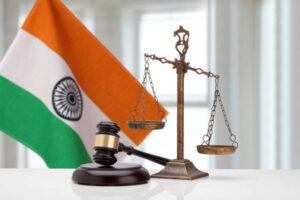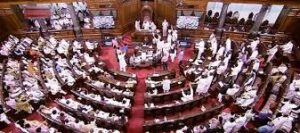Four Pillars Of Democracy
-by Abhrajita Mondal
–Reading Time – 7 min Approx
The Indian Democracy rests on the four pillars of democracy. However, we move on to explain what they are all about, it makes sense to understand a bit about the Indian democracy. Indian Democracy is one of the most respected ones around the globe. It is not just about elections or voters. It is much more than that. The main objective of the Indian democracy is that every person should have a say in decisions pertaining to society at large.
You may already know, that India is a parliamentary democratic republic. And, the president is the head of the state. However, the most important decisive powers remain with the prime minister. The Indian political system is a dualistic model, in which there is a central power governed by the prime minister, and the state power, which lies with individual chief ministers. You will be overwhelmed to know, that India is the largest democracy in the world. There are at least 1.4 billion people in the country. There are few democracies around the world, as competitive as the Indian Democracy.
Now, it is time to unearth what the Four Pillars of Democracy are all about. The pillars are the legislature, executive, judiciary, and the press. Every pillar should function in the manner, it was intended to. However, the fourth pillar, which is the press may not be functioning in the way, it was intended to. It has become more of a money-making channel today. Legislature is the first pillar of democracy, which is responsible for creating various laws and a legal framework for the country. The parliament is the legislative body. The Executive judiciary is the prime minister’s office and ministries that govern various processes. The judiciary is concerned with the application of laws. The judiciary keeps the first two pillars in control.
Four Pillars of Democracy in India – Legislature:
Let us find out in detail about each of the Four Pillars of Democracy. The Legislature is the assembly, that makes the laws for political entities like a country or a city. The legislature enacts laws that are called the primary legislation. It can also control the budgeting functions. The members of the legislature are called legislators. The common people do not elect them. They are mostly elected indirectly.
The democratic legislatures have the six most major functions. They are authorizing expenditure, representation, deliberation, legislation, making governments and oversight. Representation is one of the major functions of the legislature. Furthermore, there are many ways, in which representation may be achieved. They are formalistically, symbolically, descriptively, substantively, and collectively. Deliberation is another major function of a legislature. It aims to encourage people to engage in debates and discussions. Most legislatures have a central power that forms all laws. Additionally, the power of the legislature over the government, is much stronger in a democracy. The political parties have a representative, who represents the party in the legislature.
The parliament exercises the powers of the Indian legislature. Moreover, it mainly consists of two bodies – Rajya Sabha and Lok Sabha. The Supreme court governs the powers of the parliament. However, the parliament does have powers and control over the ministers including the prime minister. The Rajya Sabha is the permanent body, whereas the Lok Sabha is the temporary body. When a party loses power, the Lok Sabha is generally dissolved.
Four Pillars of Indian Constitution – Second Pillar Is Executive:
The Executive pillar is an important pillar with vested powers and has the sole authority in day-to-day administrative matters in the state. The Executive body consists of the President, Vice-President, Prime Minister, Cabinet Minister, Secretaries, and Civil services. You should know about each one of them.
The Executive powers lie with the President of India. He has all the constitutional powers, that he exercises through his cabinet of officers. Moreover, the council under the president cannot be dismissed, on the whims and fancies of the president. They are supported by the Lok Sabha. Furthermore, the president has the power to elect many of the high-ranking officials in the country. Some of them include high-ranking officials in the supreme courts, high courts, and also Civil ranks. The president also commands the armed forces. He is also the only one who can grant a pardon to convicts on capital punishment.
The Vice president’s position is constitutionally the second-most important position. In the absence of the president, the vice president comes into action. Additionally, the vice president is also the chairman of the Rajya Sabha. The Prime minister is the chief of the government. He leads the Executive of the Government of India. The president appoints the prime minister. There is a council of ministers under the prime minister. There are several secretaries as well, under the government. The ministers in the cabinets are responsible for the civil servants as well.
Judiciary – The Third Pillar of Democracy:
The Judiciary is an important pillar of democracy. When any constitution has a lot of power, then there should be a facilitator that can guard the rights of the citizens. The judiciary does just that. It protects the rights of ordinary citizens. Moreover, it is also empowered to uphold the law. It does not favor anyone. The constitution gives the judges the task of protecting the constitutional rights of the people of the country.
India’s judicial system was born in the British era itself. The Supreme Court of India is the highest seat of the judicial system in India. There is one supreme justice and 33 other associate justices. It is a unitary system, unlike that of the US. It is the final court of appeal for Indians. If the appeal for a case is not solved to the betterment of the citizens, at any of the high courts of the states, then one can appeal in the supreme court.
Any law declared by the Supreme Court of India, is final and binding on all others. The president dictates the terms of the supreme court. The supreme court also has the power to transfer any case from one high court to another. In recent times, the supreme court is taking special interest in matters relating to the commoners. That is the reason why many revolting groups who are not happy with the governance, are writing petitions to the Supreme Court. It is the Supreme court that keeps a check on the legislature and the Executive.
Fourth Pillar of Democracy – Media:
In a democratic country or set up, like India, the press acts as the bridge between the government and the population at large. Democracy cannot survive without the press. It exercises the basic right of freedom of speech and expression. The right of the press has been extracted from the US constitution. Moreover, the media is a sort of feedback for the government from the people, who are governed. Additionally, the citizens also get all the necessary information about the government proceedings from the media.
Today, the media also plays a huge role in acting as a watchdog. It also judges and records the misbehaviour of politicians and government officials. Thus, the media’s role encompasses accountability. It is also a mechanism for communication. The media along with the judiciary can act against the non-competitiveness and fallacies of the government.
Article 19(1) (a) of the Indian Constitution states that all citizens have the right to freedom of speech and expression. You can separate the media from the pillars of democracy. Apart from being the source of news, it is also the source of voice of the people. Thus, it is a two-way communication channel. The media is expected to be impartial in all its dealings. It also plays the role of suppressing the first three pillars, in case they go wrong somewhere.
You will find the media as an umbrella term that includes several news agencies, newspapers, and magazines. You will also find various facts and figures being printed in editorials from time to time. However, the media also has its limitations. It has to be understood, that no freedom of expression can be absolute. However, it has to perform the role of checking on the commandments of the other three pillars, so that the governed are not at a loss. If the media takes on its truest form, it can be very advantageous for the people of any country. The media plays a very important role in making people aware of their rights and duties.
It also makes people aware of all the political happenings across the country. Moreover, it draws attention to various institutional failings. It also plays the role of pressurizing the government over several situations. Thus, the media is truly the fourth pillar of democracy.
The Indian constitution is one of the biggest democracies, that gives equal and undivided attention to all the pillars of the democracy. There are around 900 million voters in India, who decide upon governance. So, it is looked upon as an example by many other developing nations around the globe.
-by Abhrajita Mondal
Dear Reader, Hope you liked the post. If you think our initiative “The Creative Post” is worth supporting, then please support us by paying the amount you think we are worthy of. We believe, the value of content should be decided by the consumer. Hence we request you to evaluate our worth and pay accordingly by Clicking Here.


